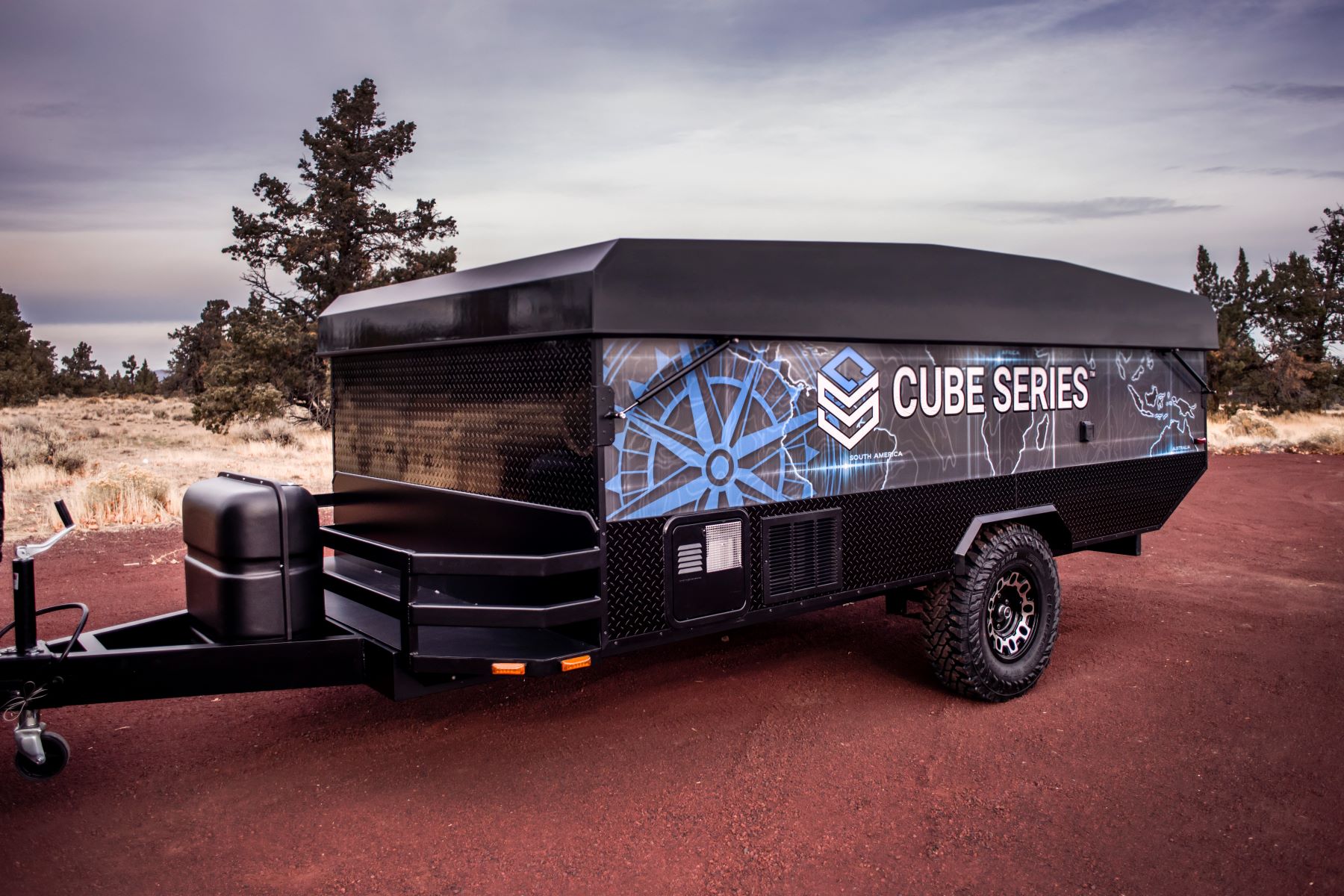We do love a pop-up camper, having traveled many thousands of miles with two vehicles built with pop-up roofs, one manual and soft-sided and the other fancy and hard-sided. The logic is that a streamlined vehicle performs better on and off-road, and top-heaviness should be avoided at all costs; I cringe when I see tall vehicles with copious high-level internal storage. No, thank you. The only major drawback of a pop-top roof is that the roof usually needs to be lifted for the space to be usable (I designed my Defender camper to be permanently habitable), and some might have an irrational fear of the roof falling on their heads while they sleep.

The Cube Series pop-up trailer combines innovative design with practical features to enhance the camping experience. This trailer is designed for durability and versatility, boasting hard-sided pop-up walls that offer a level of security and resilience not typically found in traditional canvas campers.

Constructed from a blend of high-quality materials, including composites, aluminum, and alloys, the Cube Series trailer is engineered to withstand harsh environments, making it suitable for all-weather camping. Its lightweight design, starting with a base weight of 2730 pounds, ensures that it can be easily towed by most vehicles, including compact cars, without compromising on-road handling or fuel efficiency.

The camper body is constructed with a lightweight aluminum base, and features molded fiberglass for the main tub, walls, and roof, which are infused and vacuum-bonded for added strength and lighter weight. It boasts a one-piece fiberglass roof. Inside, the camper is fitted with aluminum cabinetry and thermofoil countertops. It includes a two-burner range with a glass top, a 3-cubic-foot refrigerator/freezer, and a built-in one-cubic-foot microwave. The upholstery is made from synthetic leather, and the space includes an “L” shaped dinette that converts into an 80-inch sleeper, complemented by a 12-volt LED interior lighting system and a power station with 110 volts and USB ports.

For convenience, the camper features a 12-volt LED entry light, an enclosed service center, and a 19,000 BTU forced air furnace. There’s a 1.7-gallon water heater, enclosed and heated areas for holding tanks, a system for winterization, an exterior shower, an electric water pump, tank monitoring systems, and a DC to DC charger for recharging the battery from the vehicle. The trailer also offers an interior toilet reminiscent of the unit in the Nimbl camper.

Exterior attributes include locking compartment doors, large insulated acrylic windows with shades and screens, a radius entry door with a flush mount lock and deadbolt, fold-down entry steps, and a handrail. Safety and power systems include 24-volt power actuators for lifting the roof, a 30-amp AC/DC battery charger, GFI circuit protection, smoke and gas leak detectors, a fire extinguisher, freeze-resistant water lines, a 30-amp shore power hookup, and a 12-volt AGM battery.

The camper offers customization options such as three solid exterior colors, two upholstery colors, three cabinet colors (that blue would not be our first choice), and two countertop colors. Additional features include a variety of water heaters, a wet bath with a toilet and shower, an air conditioner, a deluxe roof vent, keyless entry, a telescoping table base, a spare tire with mount, full body graphics, and an off-road package with enhanced suspension and tires. There are also three solar power packages and three off-grid packages with different capacities of lithium-ion batteries, enhancing its suitability for extended remote adventures.
Starting at close to $56,000.
Read More: eBike Buyers Guide
Our No Compromise Clause: We do not accept advertorial content or allow advertising to influence our coverage, and our contributors are guaranteed editorial independence. Overland International may earn a small commission from affiliate links included in this article. We appreciate your support.


